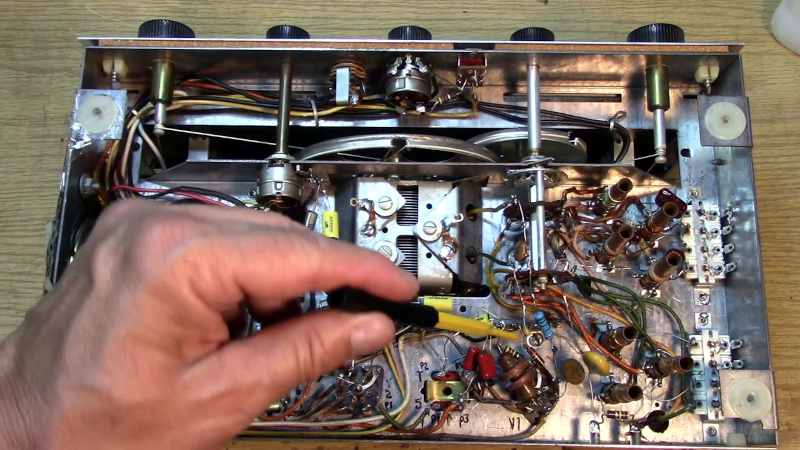[MIKROWAVE1] claims he’s not a radio repair guy, but he agreed to look at a malfunctioning Hallicrafters S-120 shortwave receiver. He lets us watch as he tries to get it in shape in the video below. You’ll see that one of his subscribers had done a great job restoring the radio, but it just didn’t work well.
Everything looked great including the restored parts, so it was a mystery why things wouldn’t work. However, every voltage measured was about 20V too low. Turns out that the series fuse resistor had changed value and was dropping too much voltage.
That was an easy fix and got three of the radio’s four bands working. The fourth band had some problems. Fixing some grounding helped, but the converter tube was weak and a new replacement made it work much better.
There were some other minor issues, but in the end, the radio was back to its original glory. We have to warn you that restoring old radios can be addictive. The good news is, thanks to the Internet, you don’t have to figure it all out yourself or find a local expert who will take an apprentice. Hallicrafters was a huge name in the radio business after World War II, and, for that matter, during the war, too.
















When I was a kid I was handed down a 1950 era Hallicrafters receiver from my dad who bought it, I believe, at an Air Force PX. It was a pretty basic set with AM and A beat frequency oscillator which worked OK for CW Morse code and sort of worked for listening to SSB voice.
The radio had a so-called cheater cord which was clipped to the fiber board rear panel, so power was removed when the back was off. The reason was that it was a hot chassis design where AC line voltage was directly rectified without use of a plate transformer. The wall end of the cord was not keyed such that it could be plugged in with either of the conductors being on the hot side of the outlet. The plastic knobs generally prevented bad stuff from happening. If the plug was in the socket the dangerous direction with the case being hot, placing a hand on the case, there was a sensation of a pn AC buzz. The paint was helpful at providing some insulation. One time the the volume/on-off knob fell off due to a loose set screw. Without thinking, I touched the metal shaft and got a medium strength jolt even though I had leather soled shoes on a linoleum over concrete floor. After that I flipped the plug in the socket at marked the plug so I would not plug it the “wrong” way in the future.
Of course now I have a Topaz ultra isolation transformer on my bench for working on old radios like the Hallicrafters and line operated TV sets – not many line operated TVs any longer.
Guitar amplifiers used to have a grounding switch that intentionally connected the chassis to one or the other side of the AC line through a small capacitor.